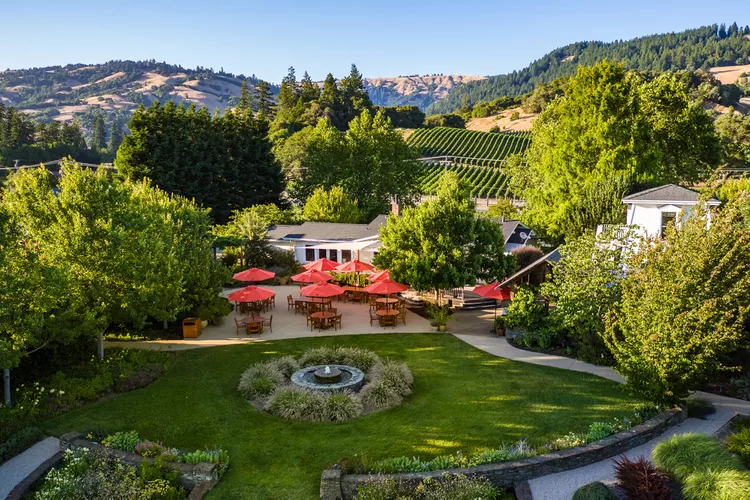1. Introduction
There’s more than meets the eye in paradise.
2. Jamaica’s Tropical Appeal
Americans have long viewed Jamaica as their easy-to-access tropical playground. The island is less than two hours from Miami and around four hours from New York City, Dallas, and Chicago — all via nonstop flights. It’s easy to be swooned by the cool, music-infused culture that makes Jamaica stand out from other Caribbean islands.
3. Underwater Challenges
However, just off the coast of paradise, an underwater battle rages — a battle that has resulted in a dramatically depleted fish population and poor reef health. It’s a problem the GoldenEye Foundation, which operates out of Oracabessa Bay in partnership with GoldenEye resort, is focused on solving.
“From the 1920s to the 1960s, fishing was the backbone of a sustainable livelihood for families in the area,” Travis Graham, executive director of the GoldenEye Foundation, stated. “Today, fishermen continue to play an important role in the well-being of the community; however, over the years Jamaica’s fish stock has decreased dramatically and is now one of the most depleted fish stocks of any country in the world, resulting from poor reef health and the impacts of climate change.”

4. Establishing a Sanctuary
The foundation partnered with the Oracabessa Bay Fishers Association in 2009 and established the Oracabessa Bay Fish Sanctuary in 2010. Consequently, the sanctuary, which protects vital breeding areas and fish habitats, is now a no-fishing zone. Some local fishers, who once relied on the bay for their livelihood, are now being trained as scuba-certified coral gardeners to build up the once-dwindling reef and grow fish populations.
“In 2019, we launched the Oracabessa Bay Dive Center, the only dive center in Jamaica to be operated by a non-profit organization. Through our dive center, we train, certify, and employ local fishers, and the profit made provides funding to our marine conservation programs,” explained Graham.
5. Impact on Marine Life
The fishers-turned-coral-gardeners have had a staggering effect on the health of the reef and, in turn, the fish population. According to the foundation, there has been a 1,800 percent increase in fish biomass — the total number of fish counted in a specific area of water multiplied by the average weight of fish sampled — in the bay. Graham added that “by 2030, we are aiming to outplant 100,000 corals throughout the reefs within the Oracabessa Bay Fish Sanctuary.”

6. Community Involvement
Moreover, conservation efforts have provided local fishers with a new form of work and garnered significant community support. “Our community partnership model has had a significant impact on how well our conservation programs have done,” Graham explained. “This partnership has a direct benefit to the community and our local marine environment. More people in the community are now stewards of the environment.”
7. The Process of Coral Gardening
So, how does coral gardening work? The magic starts in the fish sanctuary’s coral nursery, where the team ties fragmented coral to manmade “coral trees.” As the coral grows, the gardeners clean off algae and prune the coral to keep it healthy. “Each coral tree grows about 100 two-inch pieces of coral, which continue to grow into one-foot pieces after nine months,” Graham said. Then, the coral is ready to be transported from the nursery and planted in the reef.
8. Guest Contributions
Guests at the GoldenEye resort, which is best known for being the place where author Ian Fleming wrote his “James Bond” novels, play a role in the foundation’s work — even if unintentionally. Visitors to “Snorkelers’ Cove” will pass by the coral nursery site, and those who utilize the bay’s dive center are inadvertently funding the foundation’s conservation programs and allowing locals to become scuba certified and continue reef preservation work.

9. Conclusion
The work done by the foundation, coral gardeners, and guests has a widespread and powerful effect. “A healthy marine ecosystem results in more fish that will sustain the important livelihood for fisherfolks who have been fishing for generations in Oracabessa to provide fish, which is a major source of protein for Jamaicans,” said Graham. “A thriving marine ecosystem also enhances the recreation experience for locals and visitors.”
While the GoldenEye Foundation has achieved impressive results — it’s not often that there is a 1,800 percent increase in fish — they are not alone in their efforts. Graham mentioned that there are currently 18 fish sanctuaries in Jamaica, but he attributes the foundation’s standout success to “the deep involvement of local fishermen in our conservation programs” and the support of the local community.
The GoldenEye resort that the foundation operates under offers its own set of remarkable offerings — a collection of private villas, cottages, and beach huts set along private beaches and tropical gardens. In addition to their diving programs, which ultimately benefit the local community, guests also have the opportunity to watch baby sea turtles being released into the sanctuary during the summer and fall. For the latter, Graham suggests asking for “Mel, ‘The Turtle Man.’”





